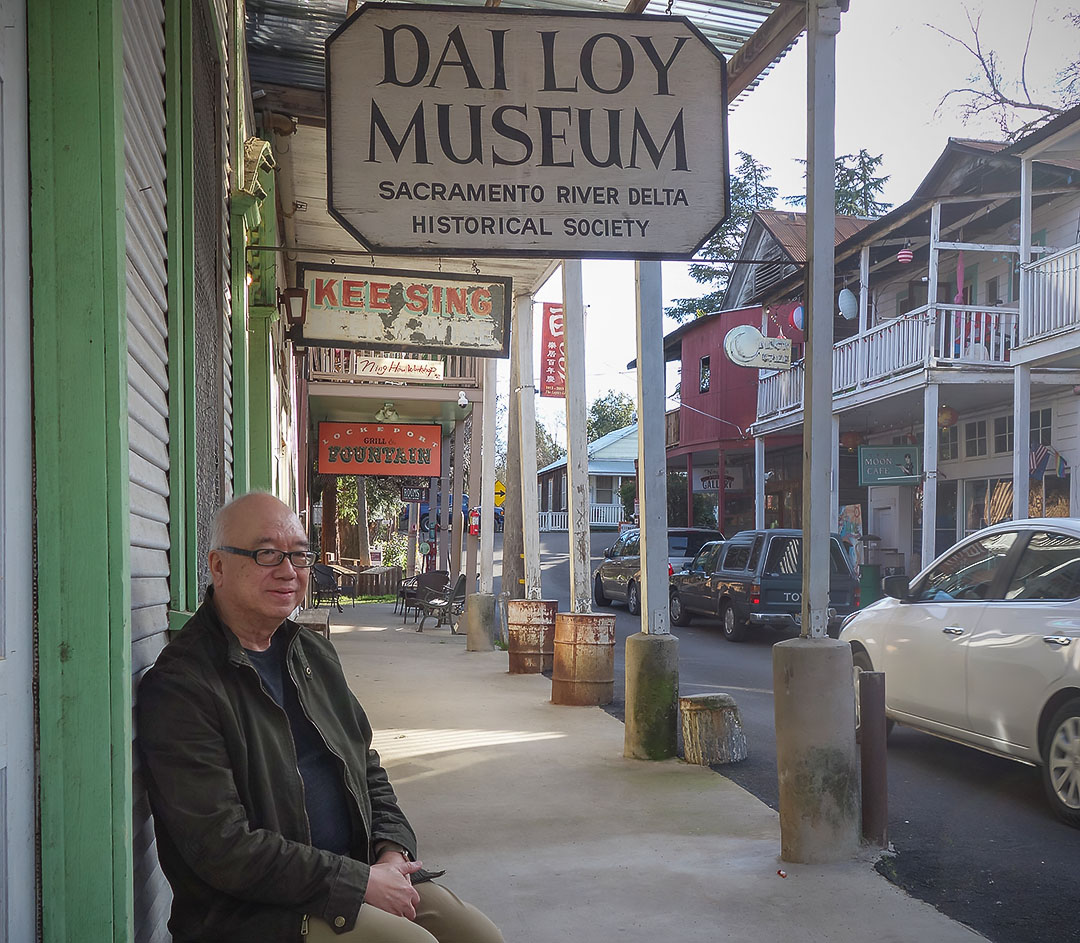A Museum Like No Other
Dai Loy Gambling Hall in Locke Catered to Men Who Helped Build the Delta
- By Rich Hanner
- Photographs by Rich Hanner
- No Comments

Step into the Dai Loy Museum in Locke, and you find a place that’s dimly lit, with floors that gently rise and fall, symptoms of a foundation that’s old and arthritic.
Yet, wandering through this dark cavern of wood, it’s easy to imagine the way the place was during its illegal heyday. Then, it provided respite to men, single, hard working, most a world away from home. Cigar and cigarette smoke drifted through the air. The clatter of dominoes and chips mixed with the notes of a Chinese harp being strummed at the back of the main room.
The Dai Loy was a gambling hall, one of several in the rollicking, wide-open town that Locke once was. Now it is a museum, and there is no other like it anywhere. There are no interactive displays at the Dai Loy, no gift shop, no audio tours. Yet there is that rare commodity: authenticity. Things are as they were, eloquent in their original, if slightly decaying, state.

Businessman Bing Lee constructed the hall in 1916. He hired American craftsmen to build the place, stick-by-stick, with quality redwood lumber, resistant to rot and perhaps one reason the structure still stands.
The new hall was christened, Dai Loy – “Big Welcome,” in Chinese.
Lee owned and operated the hall, but he did not own the land below it. That was illegal under federal law at the time. Lee leased the land from George Locke, the town’s namesake.
Today the owner, proprietor and occasional tour guide at the museum is Clarence Chu. His family purchased the little town, and surrounding farmland, in 1977. To some extent, Chu has been here, looking after things, ever since. He is bespectacled and soft-spoken, with an abiding enthusiasm for the town and the Dai Loy. Chu is an eager sharer of secrets. Standing on the main floor of the gambling hall, he pointed toward a corner.
“Look, up there, you see a screen?” he asked. “Behind that screen, a watchman would look out over the tables to make sure there were no problems.” If there were problems, they would be dealt with by a dealer or bouncer wielding a lead pipe wrapped in newspaper.
From the day it opened, the Dai Loy operated illegally. There was a constant threat of raids and robberies. There are no windows in the main hall to invite curious glances. The doors are all heavily hinged with oversized locks, the better to keep out intruders.
Locke has never been incorporated, never had its own city hall or police force. So the gambling halls and bordellos operated in relative isolation, likely with a wink and a nod – and an opened palm – from the law officers, based miles away, who had ostensible jurisdiction over the village.
“There were payoffs,” Chu said. “And when raids happened, the people running the halls usually knew in advance. There weren’t many arrests.”
Locke at one time had a population of perhaps 500, mainly Chinese laborers and the merchants who sold them liquor, food, and entertainment.
Initially, the Chinese came to California seeking gold. Later they helped build the railroads, then the levees that made farming in the Delta possible. Then they worked the farms themselves.

The Dai Loy catered to Chinese, but all were welcome, including many Filipino and Japanese men who pruned vines and harvested Bartlett pears and picked the asparagus. They favored games such as fan-tan, pai gow and blackjack. There were also lotteries using Ping-Pong balls marked with numbers, and the drawing of the numbers from a wire cage was preceded by a musical fanfare.
In the 1950s, the gambling halls, including the Dai Loy, were shuttered by authorities. The bordellos, too, were closed for good.
Since then, the jobs picking pears and cutting asparagus have withered and the men whose muscle built the railroads and the Delta have passed on. The once-bustling, slightly naughty town of Locke supports perhaps 100 inhabitants now, few of them Chinese. More than a century after it was built, the Dai Loy, the Big Welcome, still stands on Main Street in Locke. Tourists flow into the museum on Fridays and weekends.
Chu sold one of the town’s buildings, a boarding house, to the state for use as a museum. Over time, many of the other parcels in Locke have been sold as well. Chu still owns the Dai Loy and other buildings, and he remains quietly passionate about keeping the spirit of the Chinese settlement alive.
After he turned out the museum lights on a winter afternoon, Chu stepped outside. He could not help but share one more secret.
“See, down there,” he said, pointing to a well-worn button just above a bench. “There was always a watchman sitting out here. If there was a raid, he’d push the button and an alarm would sound inside.”
Then, as the shadows crept over Main Street, Chu turned and walked away from the Dai Loy, the last gambling hall in the last rural Chinese community in America.

At a glance: The Dai Loy Museum
Location: 13951 Main Street, Locke
Hours: Open Friday, Saturday and Sunday 12-4 p.m.
Admission: Free, donations welcome
Phone: 916-776-1661
For more information: http://www.locke-foundation.org/

Rich Hanner is a freelance writer and editor based in Woodbridge. He may be reached at rhanner100@gmail.com.
- By Rich Hanner
- Photographs By: Rich Hanner
- No Comments

Leave a Reply